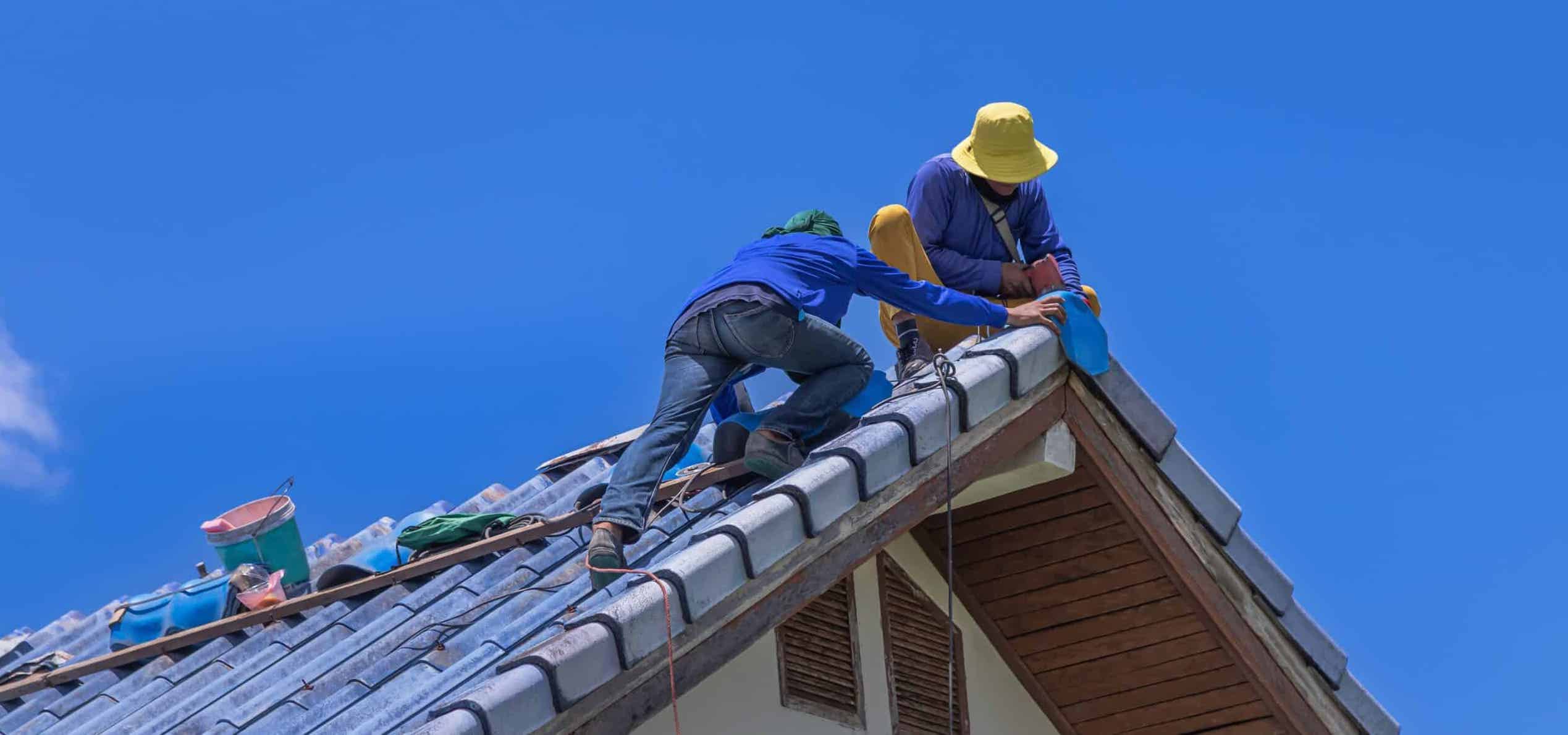When a hurricane hits, your roof becomes the first—and often only—line of defense between your home and the storm. And while total roof replacements get the spotlight, it’s often the small, overlooked fixes that determine whether your home weathers the storm or suffers thousands of dollars in damage.
With Florida’s 2025 hurricane season expected to be above average in both frequency and intensity, now is the time to make sure your roofing system is truly storm-ready. Whether you’re in Vero Beach or anywhere along Florida’s Treasure Coast, these 20 expert-approved tips will help protect your home this season and beyond.

Roof Surface & Structure
1. Re-nail Any Loose Shingles
Over time, even professionally installed shingles can loosen due to sun exposure, wind, and age. These become prime targets for uplift during high winds, allowing rain to infiltrate and cause internal leaks. By re-nailing or replacing them, you reinforce your roof’s outermost defense layer and help prevent a domino effect of shingle loss during a storm.
2. Apply Roofing Cement to Vulnerable Edges
Roof edges, ridges, and corners are most susceptible to wind uplift. Applying a bead of roofing cement beneath the edges helps seal shingles down and prevent them from curling or blowing off, especially in areas where gusts are strongest. It’s a low-cost, high-reward upgrade any homeowner can make.
3. Inspect Your Roof from the Attic
Your attic can reveal problems you can’t see from outside. Light peeking through, water stains, sagging insulation, or a musty odor could signal a roof leak or failing underlayment. Catching these early lets you fix them before a storm turns them into a major—and expensive—issue.
4. Verify Your Hurricane Straps
Florida building codes now require metal hurricane straps to anchor your roof to your home’s walls. But many homes built before 2001 may not have them—or they may be improperly installed. A quick inspection by a roofing professional or home inspector can confirm if you’re protected or at risk of wind uplift failure.
5. Check the Roof Deck for Soft Spots
If walking on the roof feels “spongy” or unstable, that means your decking may be water-damaged, decayed, or structurally weakened. These areas are far more likely to collapse under the pressure of wind or heavy rainfall. Replace compromised sections to ensure your roof can stand up to storm stress.

Drainage & Debris Control
6. Clean Your Gutters and Downspouts
Clogged gutters are more than a nuisance—they’re a major water intrusion risk. When heavy rain from a hurricane can’t drain properly, it backs up under your shingles and seeps into your fascia and soffits, weakening the roof’s structure and causing rot or mold.
7. Direct Water at Least 4 Feet from Your Foundation
Flooding doesn’t just come from above. Improper drainage at ground level can lead to basement seepage, slab cracks, or crawl space flooding. Use downspout extensions or splash blocks to keep rainwater flowing away from your home’s base.
8. Clear Out Roof Valleys
Valleys are natural collection points for leaves, twigs, and debris, which trap moisture and accelerate shingle decay. During a hurricane, this trapped water can lead to rapid deterioration, leaks, or even backup under shingles. Cleaning out valleys ensures water flows freely off your roof.
9. Trim Tree Limbs Within 10 Feet of Your Roof
During high winds, overhanging branches become battering rams. Even small limbs can scratch shingles, lift flashing, or crack tiles. Trimming branches back at least 8–10 feet minimizes the chance of physical roof damage and improves sunlight and airflow to help dry your roof faster after rain.
10. Remove Dead Trees Near Your Home
Dead or dying trees may already be compromised by internal rot, making them likely to fall during high winds. If they fall toward your house, your roof can suffer major impact damage, or worse—complete structural failure. Have a tree professional assess and remove any trees showing signs of instability.

Flashing & Sealing
11. Inspect Flashing Around Chimneys, Vents, and Skylights
Flashing—those thin metal strips that seal the gaps where roofing meets walls or fixtures—is one of your roof’s most common failure points. Rusted, bent, or dislodged flashing allows water to pour in during a storm. Ensure all flashing is tightly fastened and flush with the surface.
12. Use Hurricane-Grade Roofing Caulk to Reseal Flashing
Don’t skimp on sealants. Use weatherproof, UV-resistant, and hurricane-rated caulk to fill gaps around flashing or roof joints. These products are designed to withstand expansion and contraction due to Florida’s heat and humidity and stay intact through wind-driven rain.
13. Check Ridge Vents and Other Roof Penetrations
Vent pipes, ridge vents, satellite mounts, and solar panels can all become entry points for water and wind. Make sure everything is tightly fastened and sealed. Loose fittings can become dislodged projectiles during a storm—or worse, pull surrounding shingles loose with them.
Emergency Roof Prep
14. Take Photos of Your Roof Before the Season Starts
Clear, date-stamped photos from multiple angles are invaluable if you need to file an insurance claim. Insurers often look for proof of “pre-storm condition” to validate the extent and cause of your roof damage. Include close-ups of problem areas and wide shots of the full roof.
15. Store Tarps, Gloves, Nails, a Hammer, and Sealant
Even the most prepared roofs can suffer damage. Having a basic roof patch kit lets you quickly cover punctures or missing shingles with a tarp, reducing the chance of further interior damage before professionals arrive. Store these items in a dry, accessible location.
16. Keep Your Roofer’s Contact Info Handy
After a major storm, contractors are flooded with calls. By having a pre-vetted, local roofer like Panda Contractors already in your contacts, you save time and stress and increase the chance of getting service faster than those scrambling to find help.
17. Review Your Insurance Policy’s Wind Coverage
Many homeowners don’t realize their policy has high hurricane deductibles or limited wind damage coverage until they try to file a claim. Now’s the time to clarify your protection: understand your deductible, check if roof damage is covered, and ask about flood insurance if applicable.
18. Get a Wind Mitigation Inspection
Wind mitigation is an inspection that impacts insurance premiums. These inspections assess your roof’s ability to withstand wind and often qualify you for insurance discounts of hundreds of dollars annually. A certified inspector evaluates:
19. Label Your Breaker Box and Know How to Shut Off Attic Power
Flooding or electrical surges during a storm can ignite fires in attic fans or ventilation units. Clearly labeling breakers—and knowing which ones to shut off—adds an extra layer of safety and reduces damage risk during prolonged outages or flooding.
20. Create a “Roof Readiness” Folder
Organize all important documentation into a digital and physical file:
- Roof replacement and repair receipts
- Inspection reports
- Product warranties
- Insurance policy summaries
- Photos from before and after inspections
This makes filing claims easier and speeds up communication with insurers, roofers, or FEMA in the event of major damage.

Don’t Wait. Start Today.
Hurricane season doesn’t wait for you to get ready. And while it’s easy to put off roof prep until a storm is just days away, by then, contractors are booked, materials are scarce, and your options are limited.
By spending a few hours this week implementing these tips, you’ll:
- Strengthen your roof’s resilience
- Improve your insurance coverage and documentation
- Avoid preventable storm damage
- Gain peace of mind for you and your family
Schedule Your Roof Check or Hurricane Prep Service Today
At Panda Contractors, we specialize in storm-smart roofing for Florida’s unique climate. Whether you need a quick inspection, a full reinforcement plan, or emergency post-storm service, we’re here to help you protect what matters most.
Don’t leave your home’s safety up to chance. Call Panda Contractors or fill out our online form to schedule a professional inspection before peak season begins.




